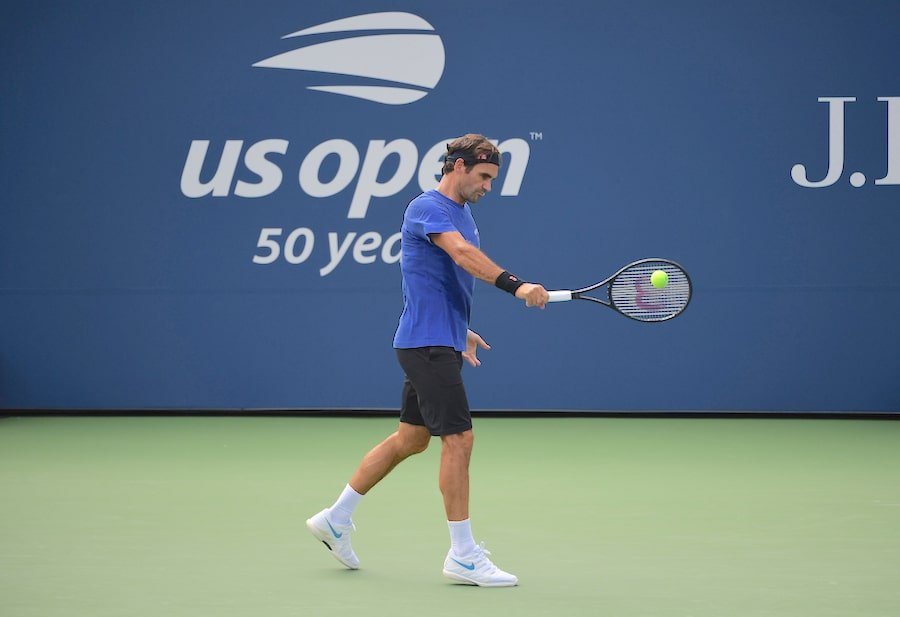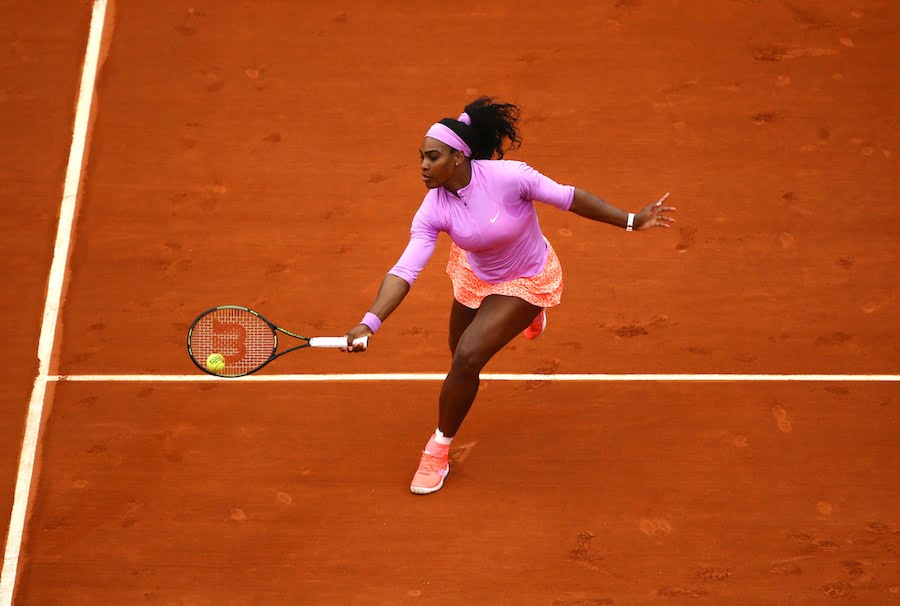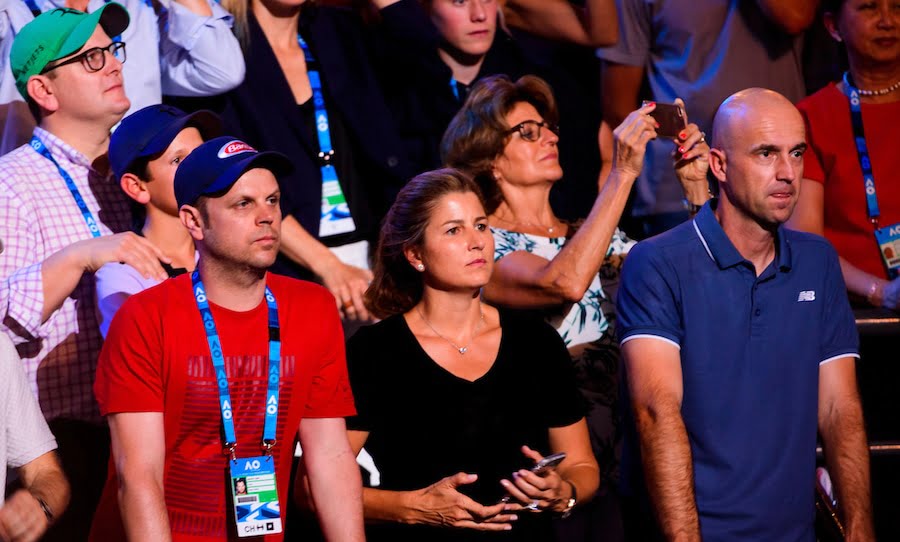
Farewell to the teenage rebel and welcome to the responsible parent
Alix Ramsay says that as today’s players have become older, life on the tour has become much more of a family affair
Personally, I blame Serena. She, on the other hand, blames Roger. And Roger, being nobody’s fool, swerves the danger and lays the blame squarely at the feet of his wife, Mirka. It’s the oldies’ blame game.
Those of us of a certain age remember a simpler time, a time when a player’s career fell into five neat and ordered sections. There were the teenage years when he or she was a “promising youngster”, followed by the 20-22 phase when they were “establishing themselves”. By the time they were 24 or so, they were “in their prime”, at 27 they were “experienced” and by their early 30s they were “veteran” (for which, read “past it”).
Back then, the arrival of a player’s 30th birthday would have come as a terrible blow. It must have been like the day we non-playing mortals all dread: the moment you realise that you actually qualify for Saga car insurance. Life can never be the same again.
But it is all so different now. Going back to our superstars: Serena Williams is 37 and a new mum. She has 23 Grand Slam titles to her name and more money than she could reasonably spend in one lifetime. Why then does she still put herself through the grind of the tour? Because she knows she still can. And reaching the Wimbledon and US Open finals in only her fourth and seventh tournaments since the arrival of young Olympia proves her point.

But how much longer can she keep this up? That is where Roger Federer comes in. “Oh, I’m just playing until Roger stops,” Serena giggled at Wimbledon. “We’re in it together. As long as he’s here, I’m going to try to be here.”
Roger, meanwhile, has long since given up responsibility for the length of his career – that is all dependent on the missus. Now densely populated with four children, getting Family Federer (along with assorted nannies, tutors and grandparents) and Team Federer all on the road together is like a military operation. Yet nine years into parenthood and seven years into his 30s, the old GOAT is as enthusiastic as ever about the travel, the work and the competition. And that is down to Mirka.

“It’s my wife who makes it all possible,” he says. “Without her support, I wouldn’t be playing tennis no more since many years. But we had a very open conversation, if she was happy to do this or not, years ago. This life wouldn’t work if she said no.”
Once upon a time, a young hopeful would pack rackets and clean socks into a bag, head out on the tour and take on the world. If they were rich or lucky, they might have a coach with them, but often they were on their own. After a few years, when the legs slowed down and the wins dried up, they got a proper job. Or moved into the commentary box.
Back in those days, press conferences involved lots of questions about string tensions and grips or, if the player was reasonably famous and the journalist was particularly brave, a gentle enquiry about the player’s latest girlfriend or boyfriend. Happy, simple times.
These days, as the players get older, their lives get more complicated and they bring their lives with them. What’s more, they talk about them. Unprompted.
There are several hardened, gnarled old journalists who are still recovering from Serena’s pre-Wimbledon riff on breastfeeding, weight gain and the traumas of weaning her daughter (apparently she had a long talk with seven-month-old Olympia, had a bit of a cry and then took the plunge. Olympia was perfectly fine with it; Serena took a bit more time to get used to the idea).
It was all cracking stuff but hard to fit into a preview about her seeding for The Championships, the state of her serving shoulder and whether or not she had it in her to win another title.
Today, the top players travel with an entourage. Obviously, there are the members of the team who all have a job to do, but there are also husbands, wives, in-laws, friends, children and pets tagging along, too. Nowadays, the top players are all so…. well, grown-up.
It is all a far cry from the days of the teenage rebel and the 20-something hedonist. Remember Marat Safin and the Safinettes, that ever-expanding group of young, blonde female fans who cheered Marat’s every step towards the 2002 Australian Open final? No one was at all surprised when he lost, while Marat did not look too concerned. As he told the crowd, he was off for a night out with his new “family”.
Then there was Marcelo Rios getting his collar felt by the law in 2001 outside a nightclub in Rome. Allegedly he had drunk well but not wisely and got into a tangle with two police officers and a taxi driver.
Or how about the best-left-unnamed player who “borrowed” a car from the German tournament he had just lost in and headed out of town? When the car ran out of petrol, he abandoned it at the side of the autobahn and hitched a ride to his next event. The transport manager of that German tournament is still having nightmares.
They were good stories at the time, but none of them came as a big surprise. Today’s older, wiser player is a very different animal. Then again, constantly surrounded by his nearest and dearest, he has little opportunity for hell-raising.
As in every walk of life, money makes a huge difference. Even 15 years ago, a middle-ranking player simply could not afford to travel with children. Women had to make the decision whether to play or to stop and start a family and men, too, faced family dilemmas of their own.
Picture the scene over the breakfast table a few years ago as Player and Mrs Player studied the upcoming schedule. “If you think I’m letting you go gallivanting across North America for the summer while I stay here knee-deep in Pampers, you can think again,” Mrs Player harrumphs. “I’ve costed it out – if we use budget airlines, stay in a self-catering motel and bring my mother to help with little Gavin and baby Gilbert, I think Cincinnati is do-able…” Suddenly that commentary box looked awfully inviting.
When Bjorn Borg, he of the 11 Grand Slam titles, ground to a halt at the end of 1980, he had made $3.6m in prize money. That is not a bad haul for the likes of you or me, but it is a pittance by today’s standards. The Mighty Fed has already banked $117.7m in prize cheques and is still going strong.
But even with all that dosh, how does Fed keep doing it? Only Mirka knows.
Grab your copy of the World’s best tennis magazine here for more incredible articles like this


